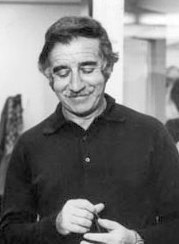
Donald Siegel was an American film and television director and producer.

Lee Ann Remick was an American actress and singer. She was nominated for the Academy Award for Best Actress for the film Days of Wine and Roses (1962).

Charles Bronson was an American actor. Known for his "granite features and brawny physique", and action films, Bronson was born into extreme poverty, in Ehrenfeld, Pennsylvania. His father, a miner, died when Bronson was young. Bronson himself worked in the mines as well until joining the United States Army Air Forces in 1943 to fight in World War II. After his service, he joined a theatrical troupe and studied acting. During the 1950s, he played various supporting roles in motion pictures and television, including anthology drama TV series in which he would appear as the main character. Near the end of the decade, he had his first cinematic leading role in Machine-Gun Kelly (1958).

Walter Herman Wager was an American crime and espionage-thriller novelist and former editor-in-chief of Playbill magazine. The movie Telefon, starring Charles Bronson, was inspired by his novel of the same name. His book 58 Minutes was adapted into Die Hard 2, starring Bruce Willis.
Peter Hyams is an American film director, screenwriter and cinematographer known for directing 1977 conspiracy thriller film Capricorn One, the 1981 science fiction-thriller Outland, the 1984 science fiction film 2010: The Year We Make Contact, the 1986 action/comedy Running Scared, the comic book adaptation Timecop, the action film Sudden Death, and the horror films The Relic and End of Days.
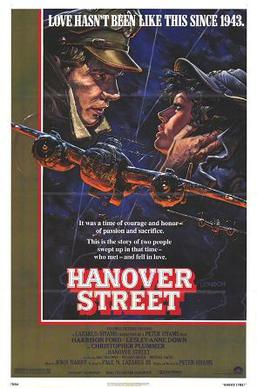
Hanover Street is a 1979 American-British war and romantic film, written and directed by Peter Hyams, and starring Harrison Ford, Lesley-Anne Down and Christopher Plummer.
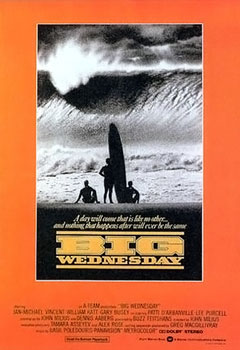
Big Wednesday is a 1978 American coming of age buddy sports comedy-drama film directed by John Milius. Written by Milius and Dennis Aaberg, it is loosely based on their own experiences at Malibu, California. The picture stars Jan-Michael Vincent, William Katt, and Gary Busey as California surfers facing life and the Vietnam War against the backdrop of their love of surfing.
Stirling Dale Silliphant was an American screenwriter and producer. He is best remembered for his screenplay for In the Heat of the Night, for which he won an Academy Award in 1967, and for creating the television series Naked City, Perry Mason, and Route 66. Other features as screenwriter include the Irwin Allen productions The Towering Inferno and The Poseidon Adventure.

The President's Analyst is a 1967 American satirical black comedy film written and directed by Ted Flicker and starring James Coburn. The film has elements of political satire and science fiction, including themes concerning modern ethics and privacy, specifically the intrusion of the telecommunications alliance, working with the U.S. government, into citizens' private lives. The film was released theatrically on December 21, 1967, and was initially not a commercial success. However, it was reviewed favorably and eventually achieved cult status.

Rough Cut is a 1980 American heist film written by Larry Gelbart, directed by Don Siegel, and starring Burt Reynolds, Lesley-Anne Down and David Niven. It was based on the novel Touch the Lion's Paw (1975) by Derek Lambert.

The Mackintosh Man is a 1973 Cold War spy film directed by John Huston from a screenplay by Walter Hill, based on the novel The Freedom Trap by English author Desmond Bagley. Paul Newman stars as Joseph Rearden, a jewel thief-turned-intelligence operative, sent to infiltrate a Soviet spy ring in England, by helping one of their agents break out of prison. The cast also features Dominique Sanda, James Mason, Harry Andrews, Michael Hordern and Ian Bannen.
Gene Quintano is an American screenwriter, actor, film producer and director. He is best known for writing sequels to the film Police Academy and directing the western Dollar for the Dead and action parody Loaded Weapon 1, both starring Emilio Estevez.

Avalanche Express is a 1979 Cold War adventure thriller film starring Lee Marvin, Robert Shaw, Maximilian Schell, and Linda Evans and produced and directed by Mark Robson. The plot is about the struggle over a defecting Soviet general. The screenplay by Abraham Polonsky was based on a 1977 novel by Colin Forbes. It was the last film for Shaw and Robson, who both died during the production in 1978.
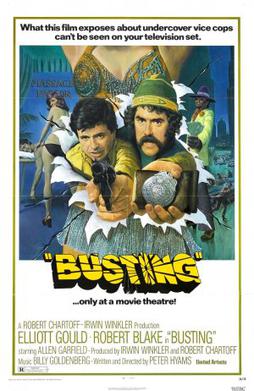
Busting is a 1974 American crime film directed by Peter Hyams in his theatrical directorial debut, starring Elliott Gould and Robert Blake as Los Angeles police detectives. It was the main inspiration for the cop series Starsky & Hutch, which premiered in 1975 and, like this film, also featured Antonio Fargas.

Love and Bullets is a 1979 action crime film directed by Stuart Rosenberg. and starring Charles Bronson, it is based on a screenplay by Wendell Mayes and John Melson.
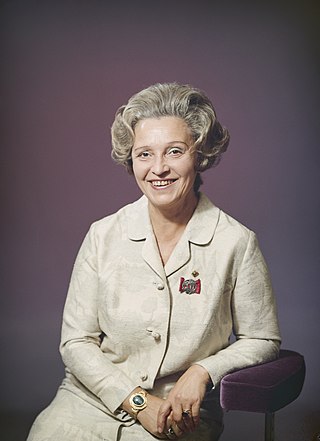
Aili Ansa Inkeri Ikonen was a Finnish film and theater actress. Ikonen was an intelligent comedian and a skillful character actress. In a film career spanning three decades, Ikonen appeared in dozens of films, and was one of the most popular actresses of her time. Ansa Ikonen and Tauno Palo became the golden couple of Finnish cinema. She was one of the first four Finnish women film directors.
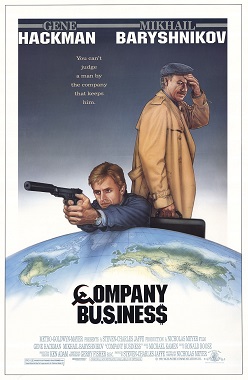
Company Business is a 1991 action film, written and directed by Nicholas Meyer and starring Gene Hackman and Mikhail Baryshnikov. The film follows the exploits of Sam Boyd, a former operative for the CIA who is reactivated to escort Pyotr Ivanovich Grushenko, a captured KGB mole, to a prisoner exchange in recently reunited Berlin.

St. Ives is a 1976 American crime thriller film directed by J. Lee Thompson and starring Charles Bronson, John Houseman, Jacqueline Bisset, and Maximilian Schell.

Maracaibo is a 1958 American drama film directed by Cornel Wilde and written by Ted Sherdeman. The film stars Cornel Wilde, Jean Wallace, Abbe Lane, Francis Lederer, Michael Landon and Joe E. Ross. The film was released on May 21, 1958, by Paramount Pictures.
















